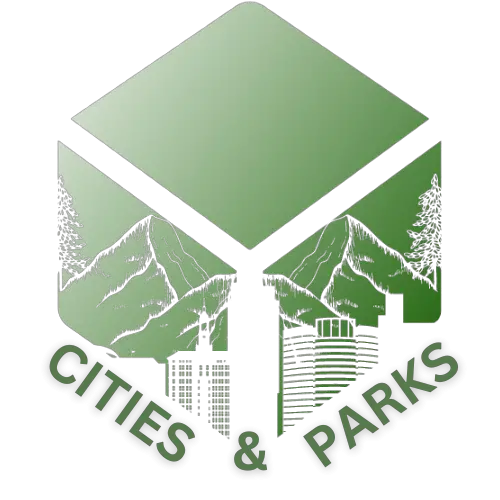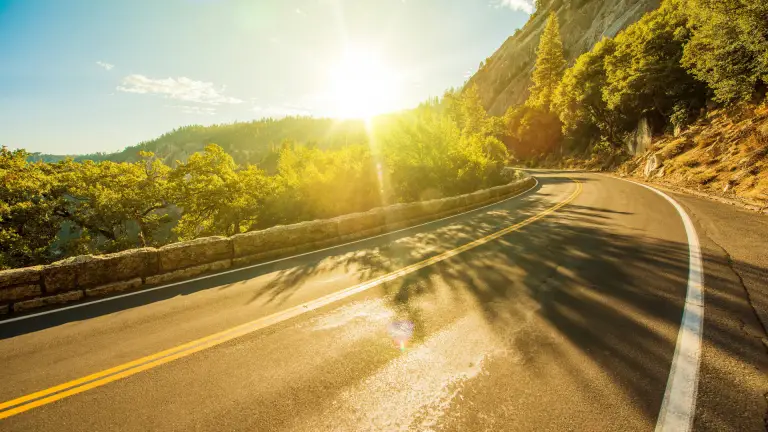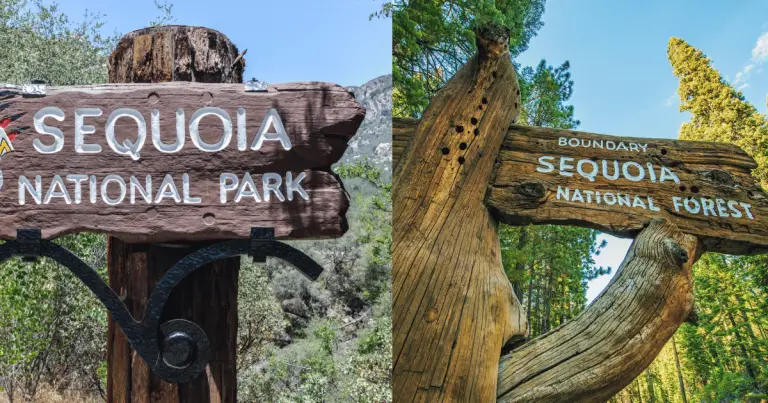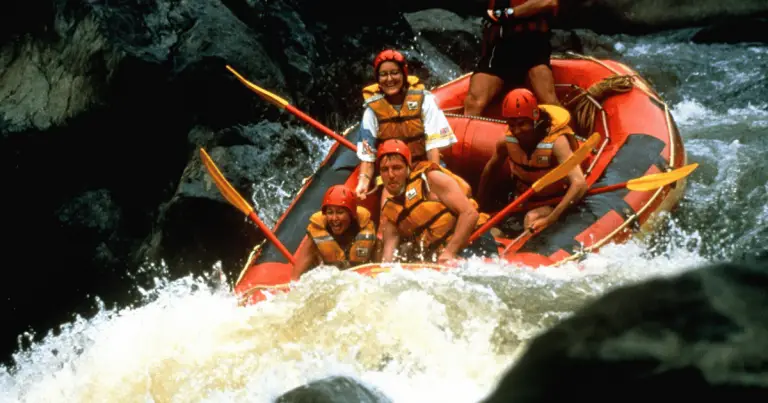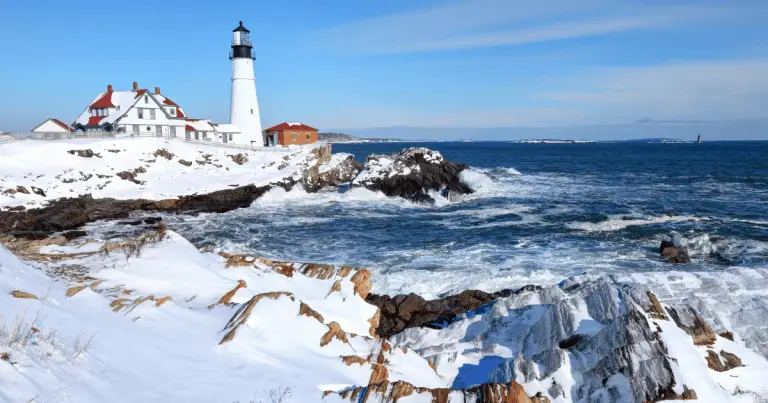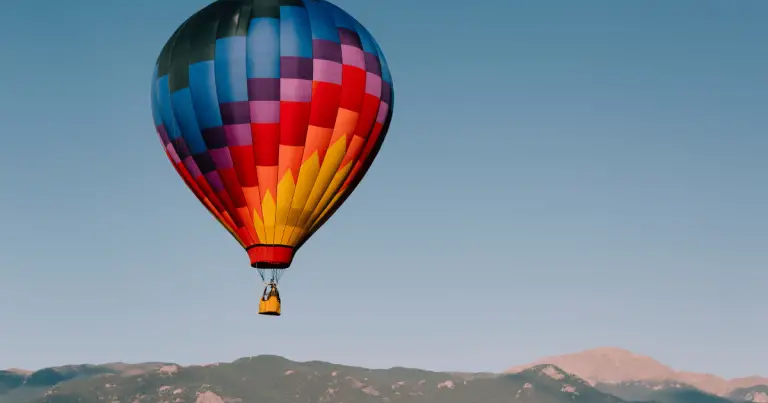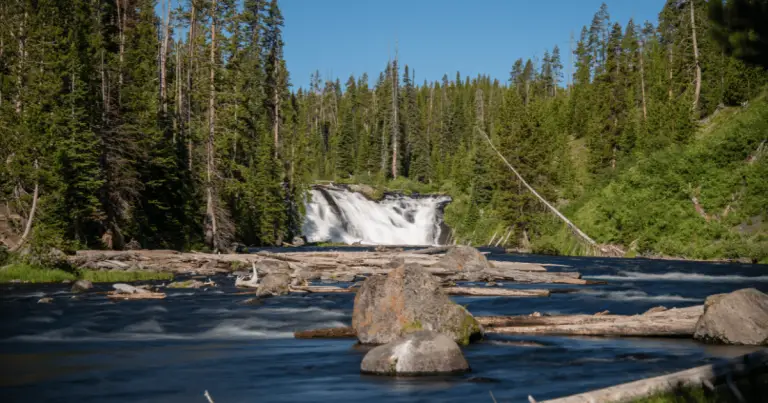Sequoia Lake Adventure Guide
For lovers of adventure, Sequoia Lake is the go-to destination to fulfill their wanderlust. Nestled in the Sierra Nevada Mountains in California, this captivating lake provides visitors with a tranquil and picturesque environment that blends in with nature. The lake’s crystal-clear waters, stunning surroundings, and iconic trails attract tourists from all corners of the world.
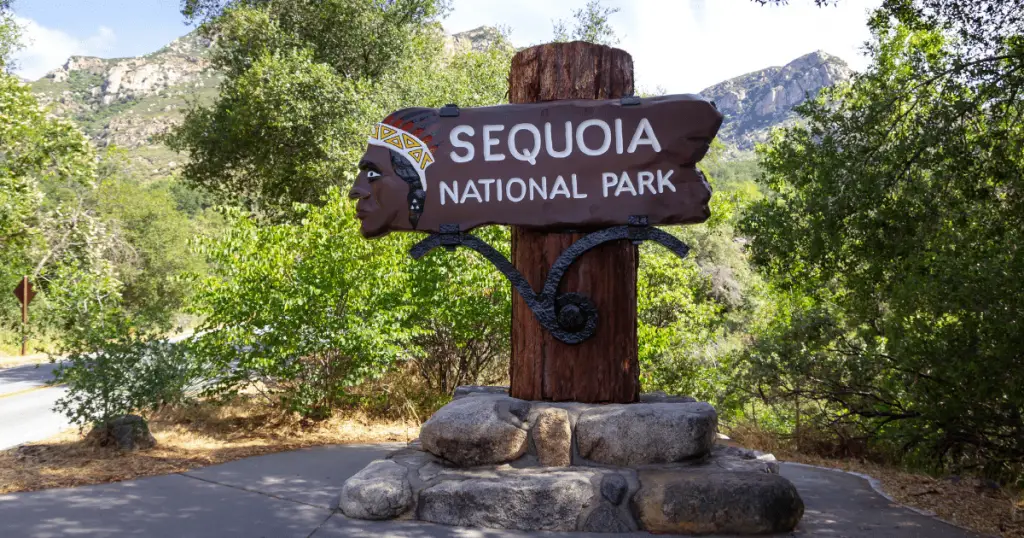
How to Get There
Sequoia Lake is nestled in the heart of the Sierra Nevada Mountain Range, encompassing a secluded natural beauty that offers tranquility for those seeking solace from city life. This paradise is in close proximity to two of the most renowned parks, Sequoia and Kings Canyon National Parks, both of which boast an astounding diversity of landscapes and wildlife. The lake forms part of the greater ecosystem of these parks, offering a unique blend of aquatic and terrestrial environments.
Accessibility and Directions
Getting to Sequoia Lake is an adventure in itself, but don’t worry, it’s an accessible journey for most travelers. From Fresno, you can take Highway 180 east towards Kings Canyon National Park. Following the signs for Sequoia National Forest, you’ll find a turnoff for Sequoia Lake, approximately 1.5 miles before reaching Kings Canyon Park’s entrance.
For those utilizing GPS, use the address: Sequoia Lake, California, to guide you to this serene destination. Please note, the roads leading to the lake are winding and can be steep in places, so ensure your vehicle is equipped for mountain travel.
Flora and Fauna Around Sequoia Lake
Sequoia Lake is surrounded by a rich variety of plant life, much of which is unique to the Sierra Nevada region. The area boasts an array of coniferous trees, including the world-renowned Sequoia, Ponderosa Pine, White Fir, and Incense Cedar.
The understory is rich with diverse shrubs like Manzanita, and a delightful display of wildflowers in spring and summer, like the vibrant Indian Paintbrush and delicate Sierra Columbine.
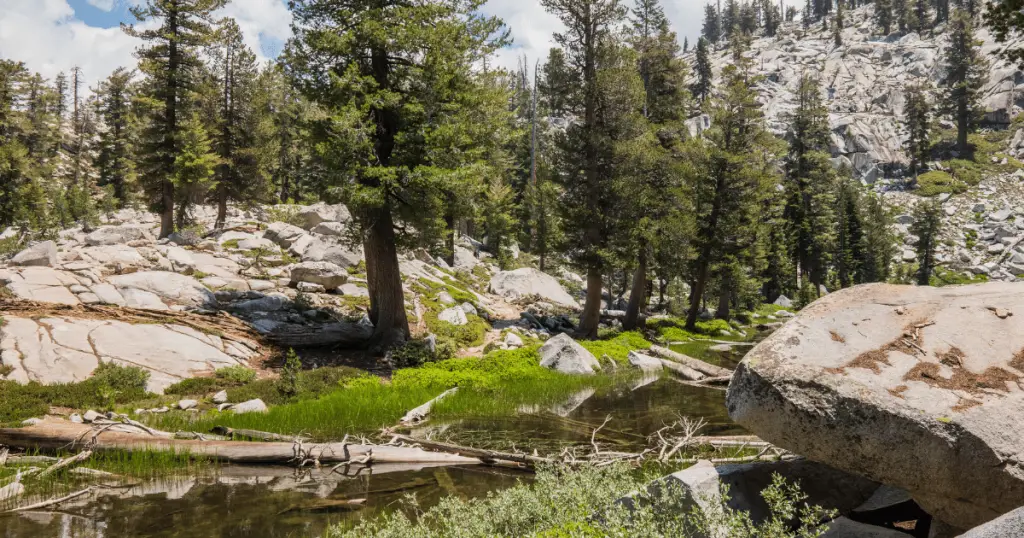
Wildlife That Can Be Spotted in the Area
A visit to Sequoia Lake offers ample opportunities to spot diverse wildlife. From Black Bears, Mule Deer, and Bobcats to smaller creatures like the Sierra Nevada Red Fox and various species of squirrels, the lake’s environment is teeming with life. Birdwatchers will be thrilled with the variety of birds, including Steller’s Jays, Mountain Bluebirds, and the elusive Peregrine Falcon.
Conservation Efforts and Protected Species
The lake area falls within the Sequoia and Kings Canyon National Parks which have numerous ongoing conservation programs aimed at preserving the unique ecosystems.
Certain species, such as the Western Pond Turtle and the Mountain Yellow-legged Frog, are protected under these programs. Efforts include habitat restoration, population tracking, and educating visitors on the importance of conservation and how they can contribute to these efforts.
Things to Do
Sequoia Lake offers a diverse range of activities for visitors to indulge in, making it an ideal destination for adventure seekers and nature lovers alike. Whether you love water sports, hiking, or simply enjoying the tranquility of the outdoors, this lake has something for everyone.
Boating and Water Sports
If you’re an enthusiast of water-sport activities, Sequoia Lake will not disappoint. The lake offers diverse water activities such as kayaking, canoeing, and paddleboarding. Boat rentals are available lakeside for those who didn’t bring their own equipment. Please note that safety regulations require life jackets for all water sports.
Hiking Trails and Camping Options
For hiking and camping lovers, Sequoia Lake and its surroundings offer several trails, ranging from easy to challenging. The lake’s perimeter trail is a popular choice for its panoramic views of the water.
Camping sites are available near the lake and deeper in the forest, offering a unique experience of sleeping under the stars amidst the tranquil whisper of nature. All camping sites have basic amenities, but remember to leave no trace and respect the natural environment.
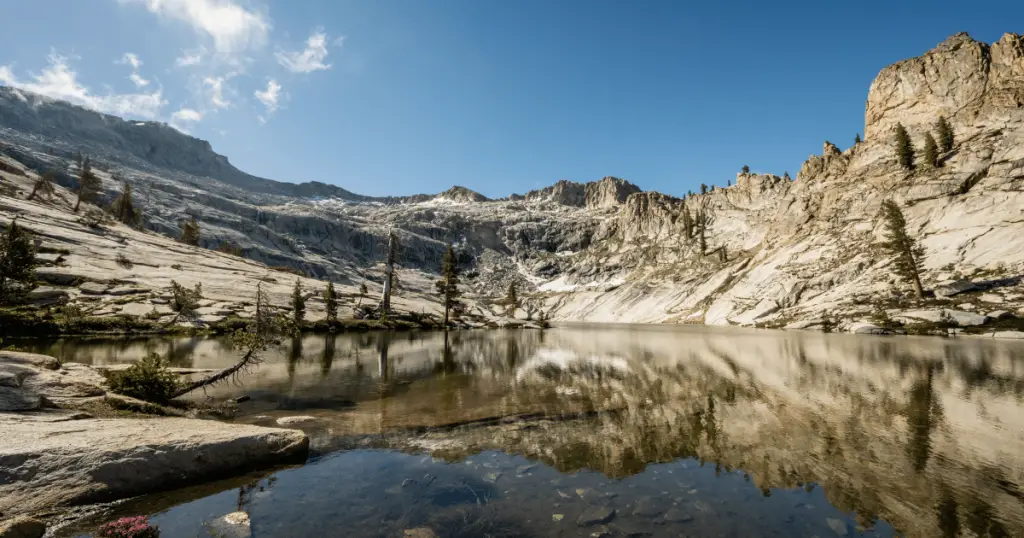
Fishing Opportunities and Regulations
Fishing is another enjoyable activity at Sequoia Lake. The lake is populated with a variety of fish, including Rainbow Trout, making it an excellent choice for both novice and experienced anglers. Remember to obtain a California fishing license before casting your line, as this is required by law. Check local regulations for details on catch limits and size restrictions to ensure you’re fishing responsibly and protecting the lake’s ecosystem.
Where to Stay
For those planning to extend their stay at Sequoia Lake, there are multiple accommodation options to choose from. The lake’s vicinity offers several campgrounds, allowing guests to immerse themselves in the great outdoors.
Sites like the Sequoia Lake Campground offer basic amenities such as showers, restrooms, and picnic tables, along with easy access to the lake and hiking trails.
If camping isn’t your style, consider staying at one of the nearby lodges or inns. The Sequoia Lodge, located just a short drive from the lake, provides cozy, rustic rooms amid beautiful woodland scenery. For a more luxurious experience, The Sierra Retreat offers elegantly furnished rooms, an onsite restaurant, and spa facilities.
Remember to book your lodging ahead of your visit, especially during peak season, as places can fill up quickly.
Best Time to Visit
Sequoia Lake offers year-round beauty, with each season presenting its unique charm and experiences. The weather at the lake varies with the seasons. During summer, from June to August, temperatures can reach up to 85°F(29°C) and the lake is usually warm and inviting, making it the ideal time for water sports and camping.
Fall, from September to November, is also a pleasant time to visit, with the changing foliage providing a beautiful backdrop for fishing and hiking. Winter, from December to February, transforms the area into a snowy wonderland, with temperatures dropping below freezing.
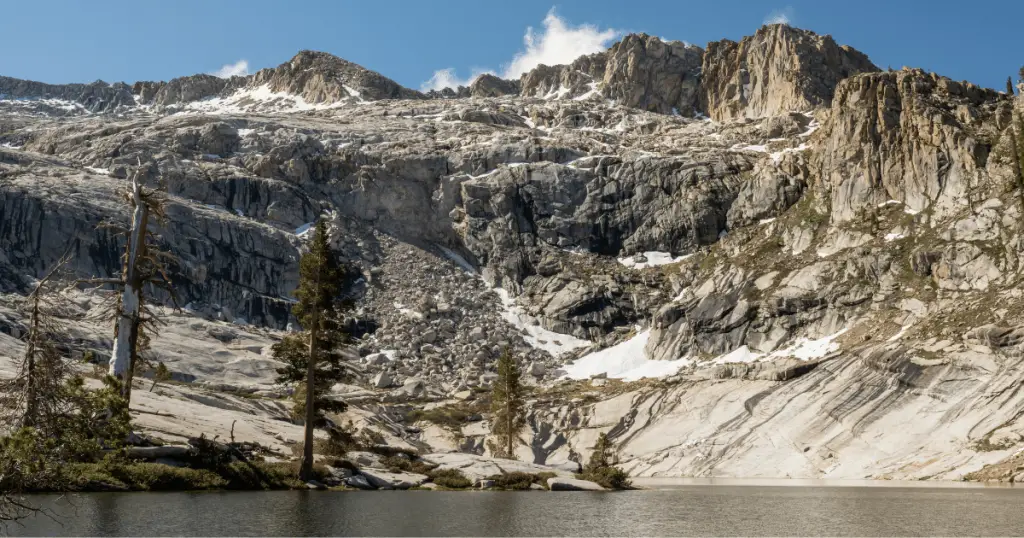
Snow activities such as snowshoeing and cross-country skiing become popular, although it’s important to note that access can be more challenging due to snowfall. Spring, from March to May, is a tranquil time to visit with fewer crowds, blossoming wildflowers, and wildlife sightings. It’s an excellent time for bird-watching and photography.
Precautions for Extreme Weather and Emergencies
While Sequoia Lake offers an array of adventures and experiences, it’s essential to be prepared for sudden weather changes and emergencies. Pack clothing layers to accommodate fluctuating temperatures.
During summer, be aware of the risk of forest fires, and adhere to posted fire safety regulations. In winter, check local road conditions and weather forecasts before setting out, and ensure your vehicle is winter-ready. Always carry a first aid kit, plenty of water, and emergency essentials such as a flashlight, map, and compass. If you plan to venture into the backcountry, inform someone of your plans and expected return time. Remember, safety should always be your top priority.
Conclusion: Sequoia Lake
Sequoia Lake offers an unparalleled mix of natural beauty, diverse wildlife, and a myriad of recreational activities, making it a must-visit destination for nature lovers and adventure seekers alike. From boating and fishing to hiking and camping, there’s something for everyone.
The area’s conservation efforts ensure the protection of its unique species and habitats, adding to its appeal as a destination that allows visitors to connect with nature in a respectful and responsible way.
Whether you plan a day trip or a longer stay, Sequoia Lake promises a memorable experience, leaving you with a deeper appreciation of the great outdoors and a longing to return. Remember to always respect the natural environment, follow safety guidelines, and be prepared for changing weather conditions. Happy exploring!
